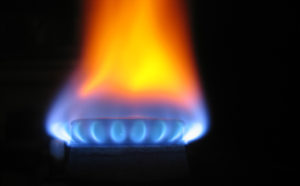 Natural gas fell on Wednesday as the blizzard that recently brought heavy snows across the Northeast dissipated, leaving behind only below-average readings, while most of the remaining portions of the US remained near or warmer than usual.
Natural gas fell on Wednesday as the blizzard that recently brought heavy snows across the Northeast dissipated, leaving behind only below-average readings, while most of the remaining portions of the US remained near or warmer than usual.
Natural gas for delivery in March fell 2.76% to $2.854 per million British thermal units by 9:40 GMT, having shifted in a daily range of $2.895-$2.849. The contract rose 3.05% yesterday to $2.935 per mBtu, compensating for most of the prior sessions 3.7% drop. Prices have fallen in eight out of the nine previous weeks.
According to NatGasWeather.com, natural gas demand in the US will be moderate compared to normal through January 28th, with a mostly neutral weather trend for the following seven days.
All that is left of the Noreaster are fizzling snow bands across the East Coast, coupled with readings between 8 and 15 degrees below normal. Although the colder-than-usual weather across the region will induce strong heating demand, the remaining portions of the US remain covered by higher-than-average temperatures, including a few more days of highs in the mid-70s for Texas and the southern Plains.
Weather systems tracking over southern California and the Southwest will carry rains and snow during the coming week, NatGasWeather.com reported. Late this week, and extending into the next, blasts of frigid Arctic air will impact the Great Lakes and Northeast, bringing periods of snow and inducing high local heating demand.
However, the coldest air across the Northeast and Great Lakes will remain largely confined, apart from cooler temperatures occasionally reaching the Southeast, while the rest of the US remains near or warmer than normal.
Temperatures
According to AccuWeather.com, the low in New York on January 30th will be 10 degrees Fahrenheit, 17 below usual, and readings will range between 10 and 22 degrees on February 3rd, compared to the average 27-39. A warm-up to above-seasonal levels is expected after February 9th.
The low in Boston on January 30th will be 6 degrees, 16 beneath the usual, while readings on February 3rd range between 6 and 17 degrees. Chicago will enjoy mostly seasonal weather on January 31st at 24-31 degrees.
Down South, temperatures in Houston will peak at 75 degrees on January 28-29th, 11 above the average, before easing to 6-8 degrees below usual for the first ten days of February. On the West Coast, Los Angeles will reach 74 degrees on today and tomorrow, 6 above usual, with temperatures set to max out in the 70s through February 11th.
Supplies
The EIA reported last Thursday that US natural gas inventories fell by 216 billion cubic feet in the seven days through January 16th, compared to analysts’ projections for a drop in the range of 220-230 bcf. Total gas held in US storage hubs amounted to 2.637 trillion cubic feet, expanding the deficit to the five-year average of 2.790 trillion to 5.5% from 3.8% during the previous period. The surplus to the year-ago stockpile level of 2.438 trillion cubic feet narrowed to 8.2% from 11.0% a week earlier.
This week’s report is expected to reflect a much thinner inventory withdrawal that would bring deficits to ~100 bcf once again as overall mild conditions across the US get factored in. Early estimates called for a draw of 100-110 bcf, compared to the five-year average decline for the week at -168 billion cubic feet, while inventories fell by 219 bcf during the comparable period last year.
February 5ths report, which will be based on data from the current week, is also expected to come in leaner than the average due to the recent widespread warmth, apart from the Northeast. The following builds, however, stand a chance of posting larger withdrawals, especially if the coming Arctic blasts over the northern US have a more widespread impact.
Pivot points
According to Binary Tribune’s daily analysis, March natural gas futures’ central pivot point stands at $2.918. In case the contract penetrates the first resistance level at $2.983 per million British thermal units, it will encounter next resistance $3.031. If breached, upside movement may attempt to advance to $3.096 per mBtu.
If the energy source drops below its first support level at $2.870 per mBtu, it will next see support at $2.805. If the second key support zone is breached, the power-station fuel’s downward movement may extend to $2.757 per mBtu.





